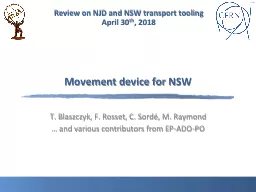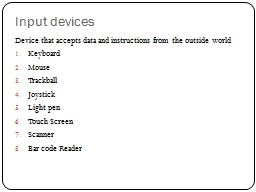PPT-Movement device for N SW
Author : iamamercy | Published Date : 2020-06-17
T Blaszczyk F Rosset C Sordé M Raymond and various contributors from EPADOPO Review on NJD and NSW transport tooling April 30 th 2018 Content Reasons
Presentation Embed Code
Download Presentation
Download Presentation The PPT/PDF document "Movement device for N SW" is the property of its rightful owner. Permission is granted to download and print the materials on this website for personal, non-commercial use only, and to display it on your personal computer provided you do not modify the materials and that you retain all copyright notices contained in the materials. By downloading content from our website, you accept the terms of this agreement.
Movement device for N SW: Transcript
Download Rules Of Document
"Movement device for N SW"The content belongs to its owner. You may download and print it for personal use, without modification, and keep all copyright notices. By downloading, you agree to these terms.
Related Documents














